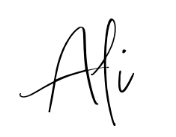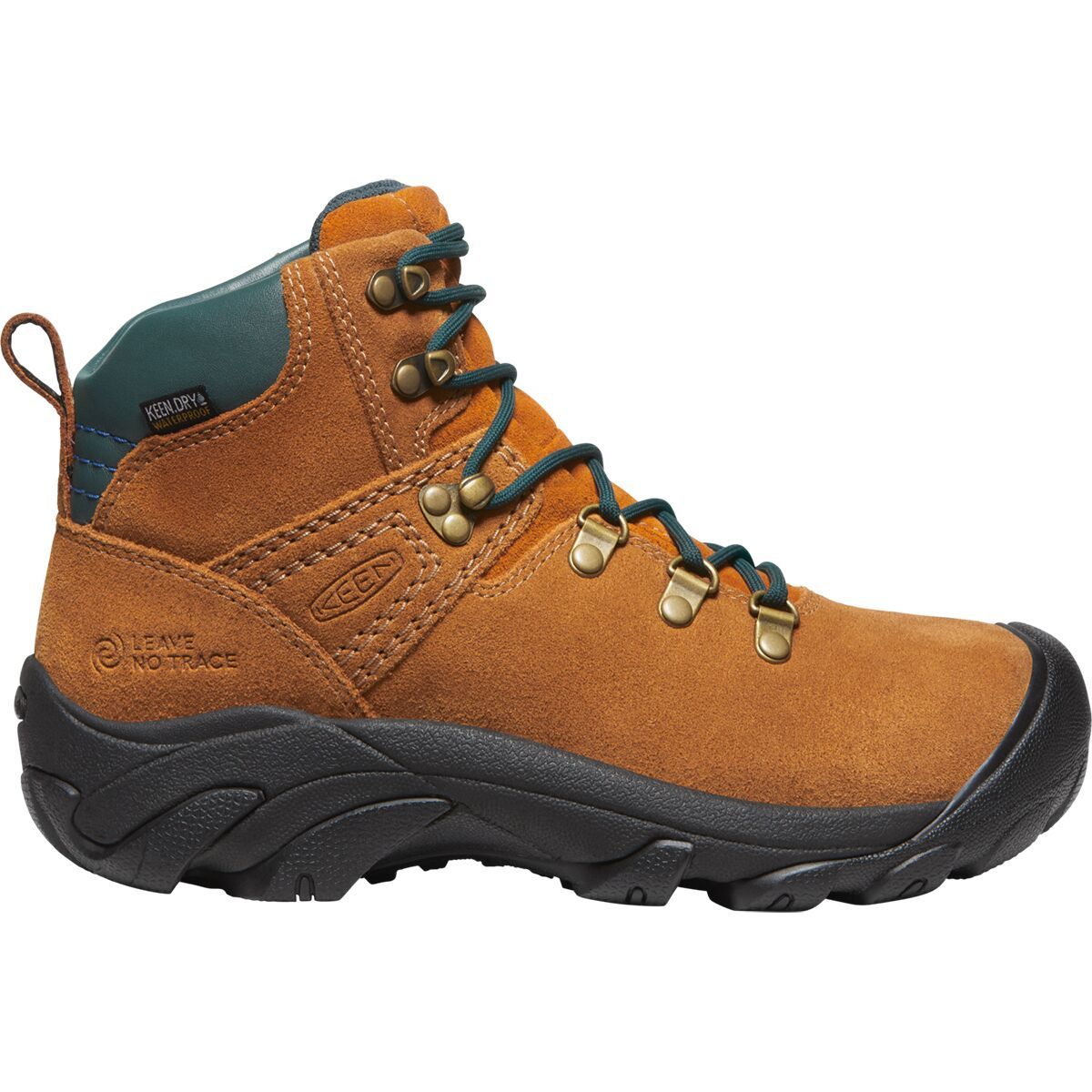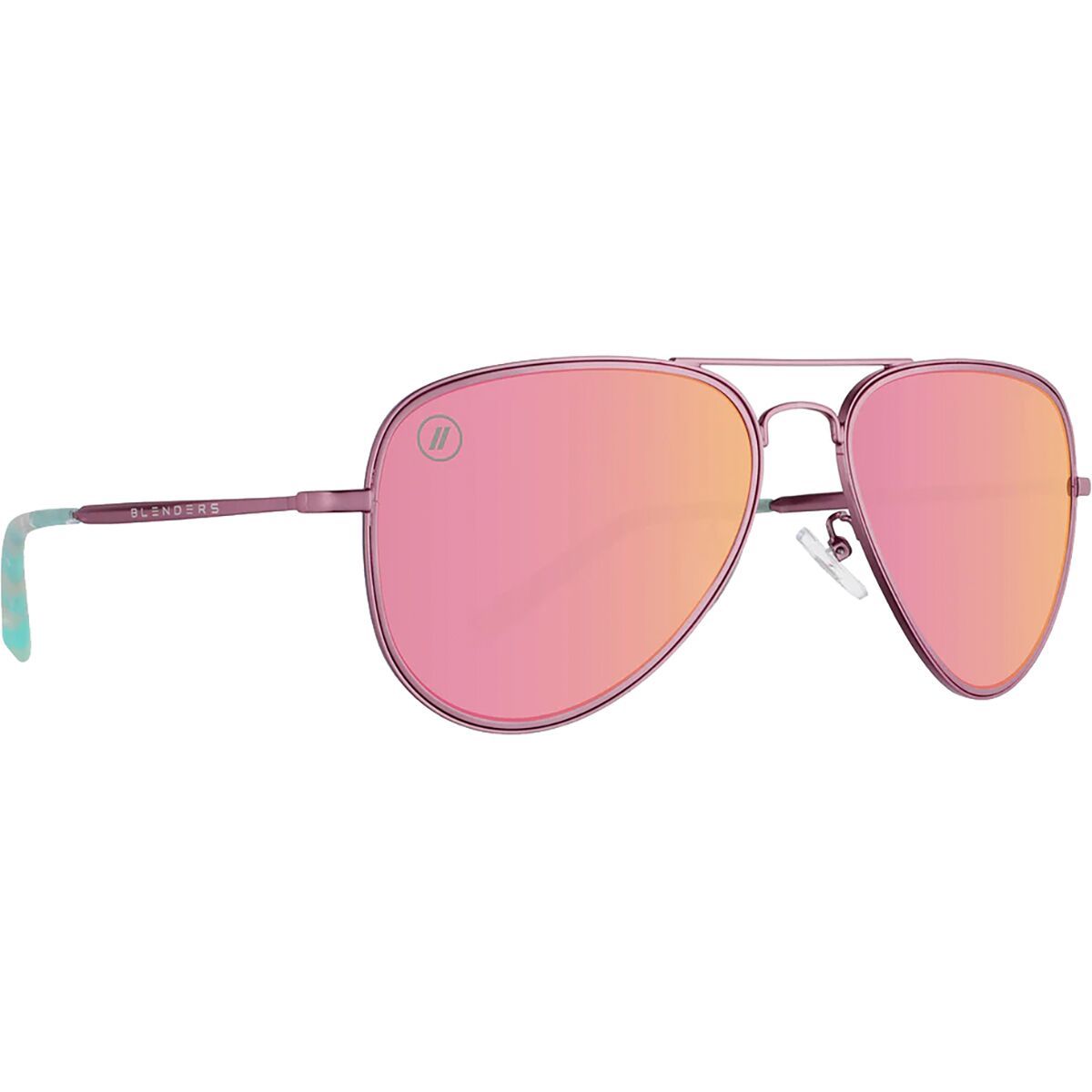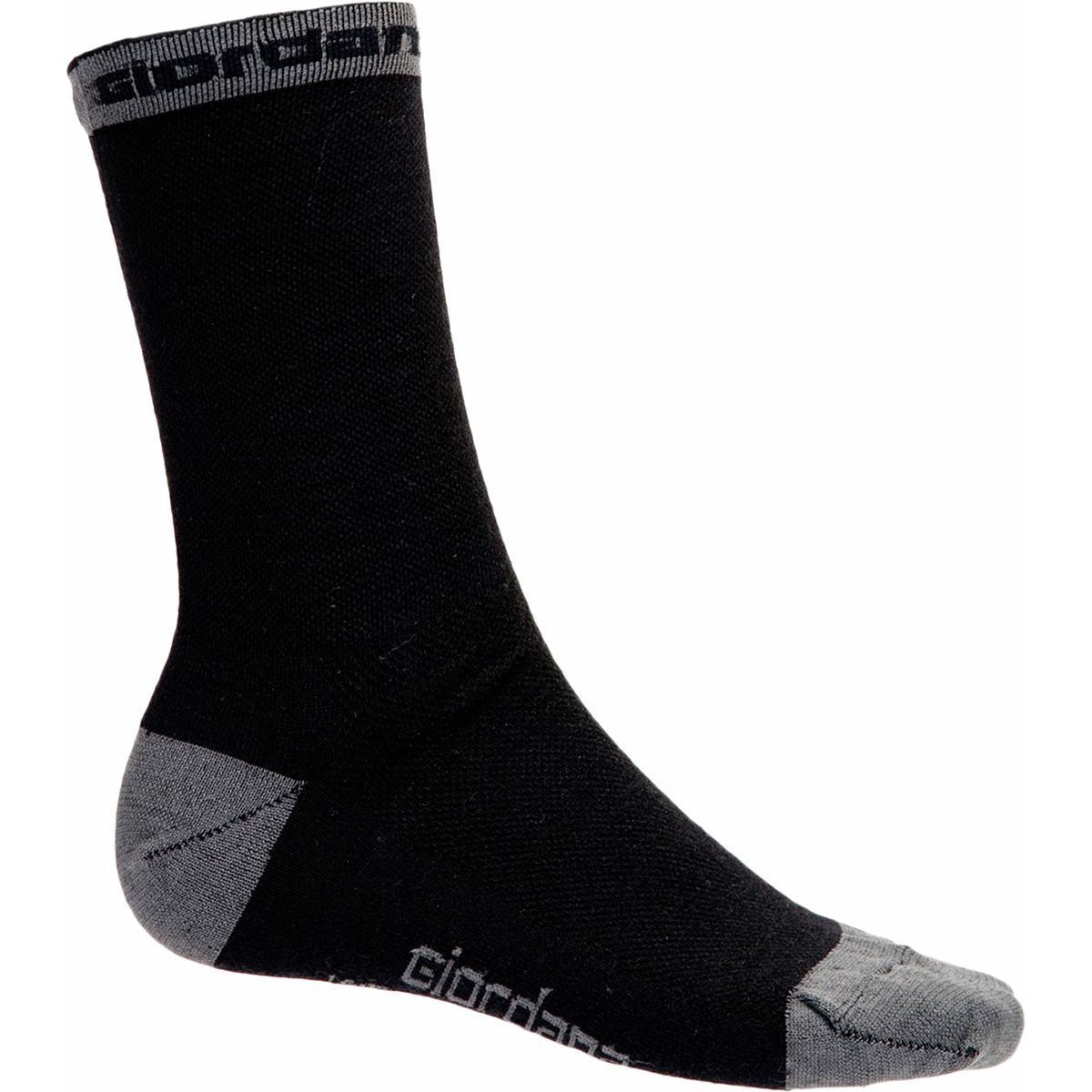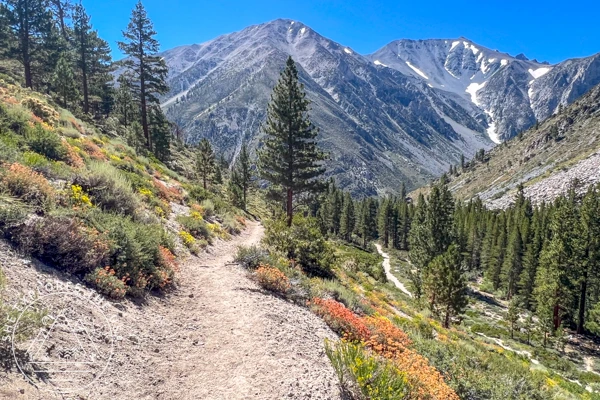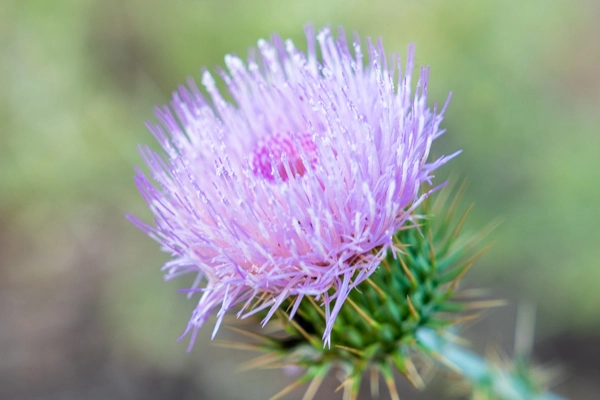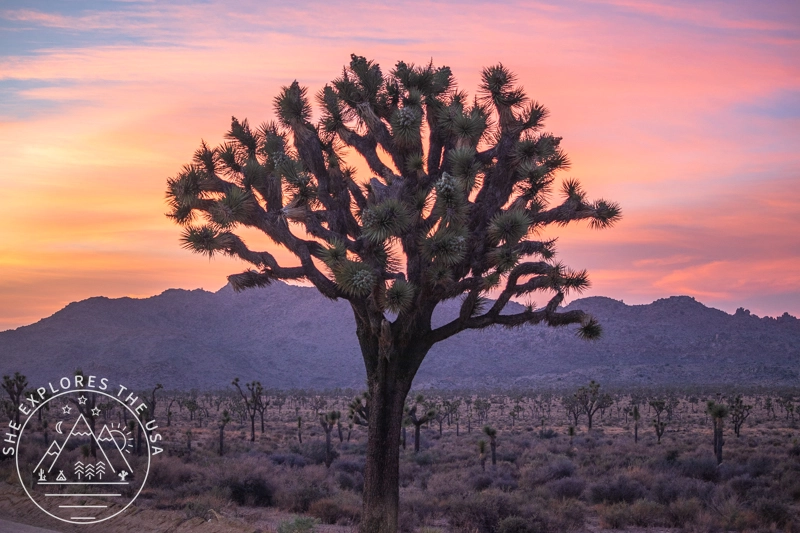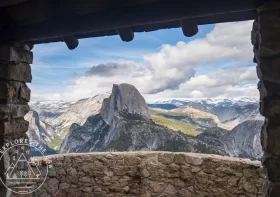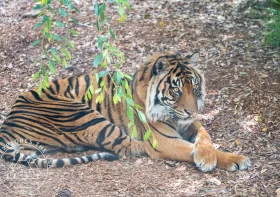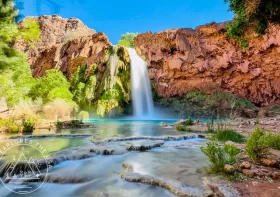Sequoia National Park: First-Timer’s Guide to an Epic Trip
DISCLOSURE: This post may contain affiliate links. If you purchase after clicking one of my links, I may earn a small commission at no extra cost to you. As an Amazon Associate, I earn from qualifying purchases. For more information, see my disclaimer.
If you’re planning your first trip to Sequoia National Park, get ready for an unforgettable adventure. This guide will walk you through everything you need to know, from how to get there and where to stay, to the best landmarks, hikes, scenic drives, and must-have gear. Whether you want to explore the giant sequoias, tackle rugged trails, or soak in breathtaking views, this guide will help you make the most of your visit.
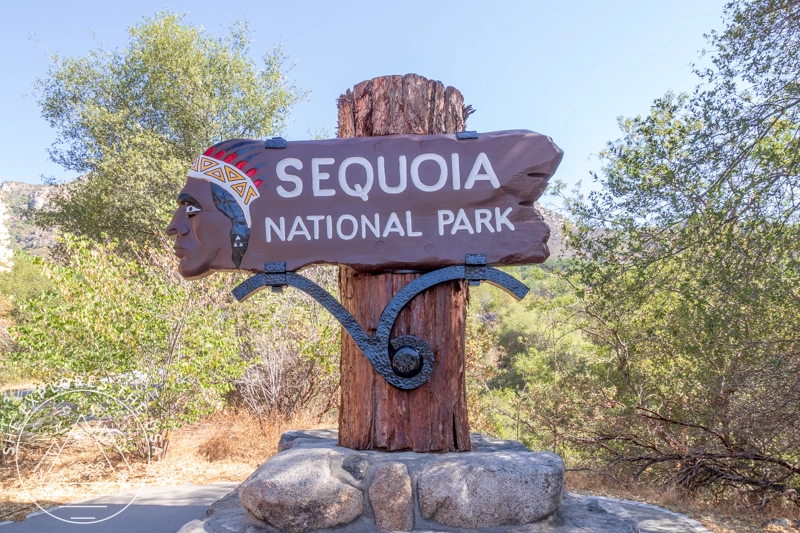
- About Sequoia National Park
- How to Go to Sequoia National Park
- Where to stay in Sequoia National Park
- Essential Gear for Visiting Sequoia National Park
- Exploring Sequoia National Park’s Iconic Landmarks
- Adventurous Day Hikes in Sequoia National Park
- Scenic Drives and Sightseeing
- Wildlife Watching in Sequoia National Park
- 3-Day Sequoia & Kings Canyon National Park Itinerary (Enter via Three Rivers, Exit via Kings Canyon)
- FAQ: Visiting Sequoia National Park
- Final Thoughts on Visiting Sequoia National Park
About Sequoia National Park
Sequoia National Park sits in the southern Sierra Nevada mountains of California. It’s famous for its towering sequoia trees, some of the tallest and oldest living things on Earth. The park is home to the General Sherman Tree, the largest tree by volume anywhere in the world. Established in 1890 as the second national park in the U.S., Sequoia was created to protect these ancient giants from logging and preserve the stunning landscape that still amazes visitors today.
Beyond the giant trees, Sequoia offers rugged mountain peaks, deep canyons, sweeping views, and lush meadows teeming with wildlife. With over 800 miles of hiking trails for all skill levels, it’s a top destination for nature lovers and outdoor adventurers. During your visit, you might spot black bears, mule deer, marmots, and many bird species; you’re almost guaranteed to see a deer or two.
For something truly unique, don’t miss Crystal Cave! Known for its breathtaking marble formations, it recently reopened after being closed for several years! Whether you’re seeking peace beneath the giant sequoias or craving an exciting outdoor adventure, Sequoia National Park has something for everyone.
Discover the best trails with AllTrails’ Sequoia National Park guide!

Best Time to Visit Sequoia National Park by Season
Curious about when to plan your trip? Here’s a seasonal breakdown of the best times to visit Sequoia National Park, based on weather, crowd levels, and what you want to experience.
| Season | Pros | Cons |
|---|---|---|
| Summer (Jun–Aug) | – Warm weather, long days – All roads/trails open – Great for alpine hikes | – Very crowded – Parking fills fast – High lodging prices |
| Spring (Apr–May) | – Peak waterfalls – Fewer crowds – Wildflowers & wildlife | – Snow on high trails – Chains may be needed – Some closures |
| Fall (Sep–Oct) | – Fewer crowds – Crisp air, great visibility – Ideal for photos | – Road closures common – Chains often required – Limited access |
| Winter (Nov–Mar) | – Peaceful snowy scenery – Great for snowshoeing & solitude | – Road closures – Chains required – Most facilities closed |
How to Go to Sequoia National Park
Getting to Sequoia National Park is simple, with several travel options depending on where you’re coming from. The park has two main entrances: Ash Mountain near Three Rivers, accessed via Highway 198, and Big Stump near Grant Grove, reached by Highway 180.
Getting to Sequoia National Park by Car
Most visitors drive, as having a car gives you the freedom to explore scenic byways and attractions. Here are typical drive times:
- About 4.5 hours from Los Angeles (230 miles) via I-5 North and CA-198 East
- About 4.5 hours from San Francisco (280 miles) via I-580 East, I-5 South, and CA-198 East
- About 1.5 hours from Fresno (60 miles) via CA-180 East
Heads up: Highway 198 has winding mountain roads and sharp turns with vehicle length restrictions. In winter, tire chains may be required due to snow or ice.
Getting to Sequoia National Park by Plane
If you’re flying, here are the closest airports:
- Fresno Yosemite International Airport (FAT): About 1.5 hours from the Big Stump Entrance via Highway 180. It’s the nearest major airport with flights from many U.S. cities. Car rentals are available for a smooth transition to your road trip.
- Visalia Municipal Airport (VIS): Around an hour from the Ash Mountain Entrance on Highway 198. It’s a smaller airport with limited flights, often requiring a connection through Los Angeles. Good for travelers wanting a quieter airport experience.
- Los Angeles International Airport (LAX) and San Francisco International Airport (SFO): Both are about a 4.5 to 5-hour drive to Sequoia. They’re great choices if you want to explore more of California before your visit. Rental cars are easy to find at these airports.
Pro Tip: If you fly into Visalia, check out the Sequoia Shuttle. It runs from Visalia to Sequoia National Park from late May through early September, with hotel pickups. Reservations are needed and can be made online. Inside the park, free shuttles run to popular spots, but note there’s no shuttle connecting Sequoia and Kings Canyon National Parks.
Where to stay in Sequoia National Park
1. In-Park Lodging
- Wuksachi Lodge: Located in the heart of Sequoia, this rustic stone-and-cedar lodge offers cozy rooms, a restaurant, and easy access to park highlights like the Giant Forest. Open year-round, it’s the only full-service lodge inside the park.
- John Muir Lodge (Kings Canyon): Though technically in Kings Canyon National Park, this lodge is close to Sequoia. It has cabin-inspired rooms and a peaceful atmosphere, making it a great base for exploring both parks.
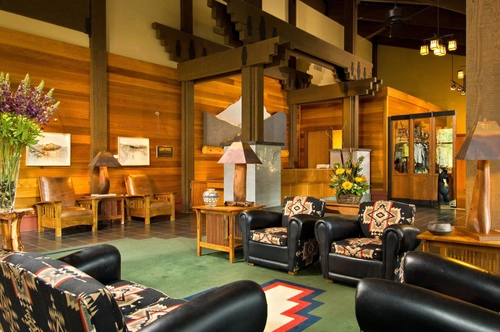

2. Camping Options in Sequoia National Park
- Lodgepole Campground: This popular campground sits near the main attractions and offers tent and RV sites, restrooms, a camp store, and showers. It’s a great mix of comfort and rustic charm.
- Backcountry Camping: For those up for a backpacking adventure, wilderness permits allow camping in more remote areas. Check with the visitor center for details and regulations.
Personal tip: I stayed at Lodgepole several times and loved it. The campsites line a meandering river dotted with rocks, creating a stunning natural scene. The sound of nearby waterfalls adds to the peaceful vibe. It’s a magical spot for camping surrounded by nature’s beauty, and every time I stayed there, I saw a bear.
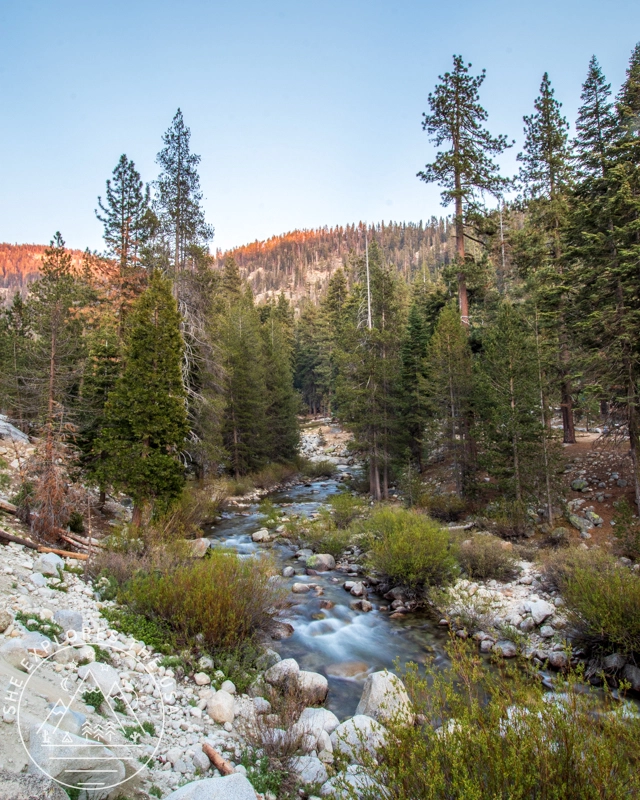
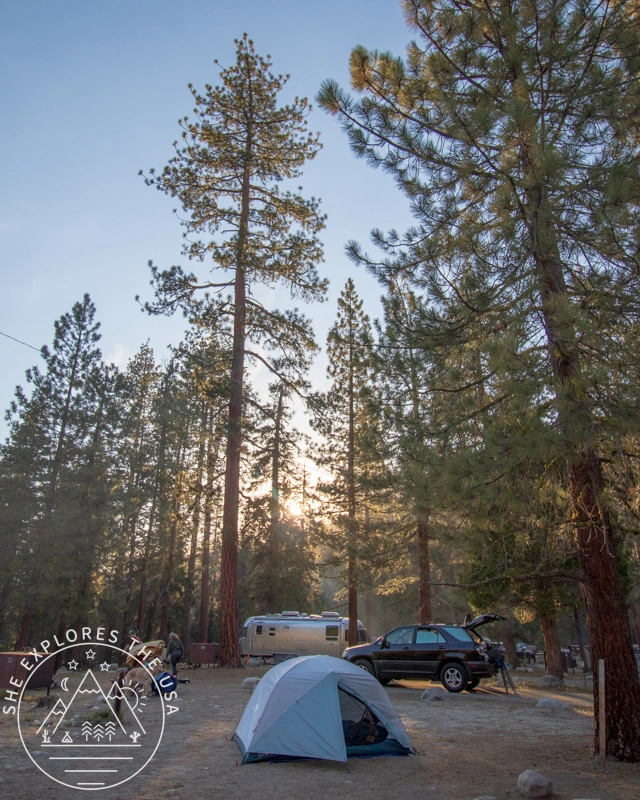
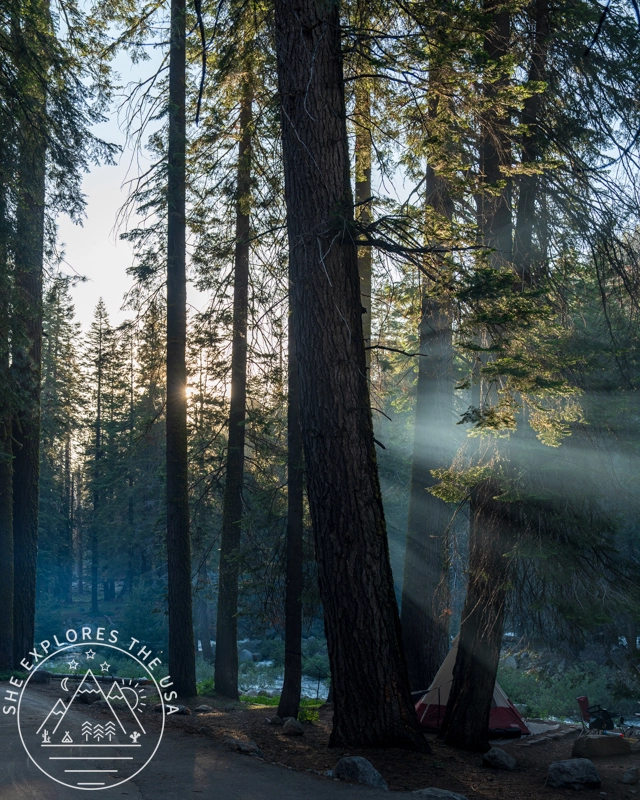
3. Rentals near Sequoia National Park
If you prefer a vacation home, VRBO offers a variety of rentals near Sequoia and Kings Canyon to suit every traveler’s needs. From cozy cabins to spacious homes, you’ll find options with WiFi, hot tubs, pools, and more. Many are pet-friendly, non-smoking, and accessible.
Sequoia Rentals
Option 1: Three Rivers Resort-Style Home
- Sleeps: 6
- Features: Spacious three-bedroom, three-bath home with a private saltwater pool and heated spa. Just 10 minutes from Sequoia, it boasts river and mountain views, plus a large vintage farm table perfect for gatherings.
Option 2: Hawk Hollow House
- Sleeps: 13 (with additional space for children under 2)
- Features: Set on nearly 4 acres with private trails and beach access. Features include vaulted ceilings, a hot tub, a game room, a wraparound porch, RV/EV hookups, and solar energy. A 10-minute drive from Sequoia.
Option 3: Redtail House
- Sleeps: 3
- Features: Secluded home with canyon views, private hot tub, modern kitchen, fireplace, and a large library. Ideal for couples or small families. Includes Tesla charger and propane grill. Note: 17 rock steps to the house, so not great for limited mobility.

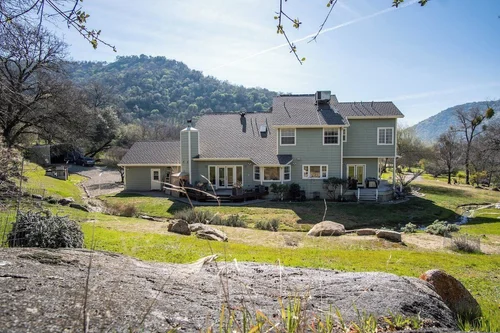
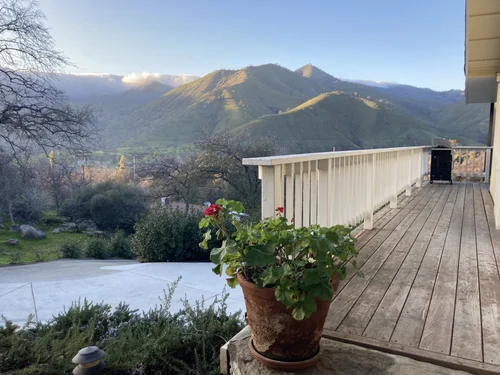
Kings Canyon Rentals
Option 1: The Gilmore Cabin
- Sleeps: 4
- Features: Cozy cabin in Pinehurst with mountain views, kitchen, free WiFi, and microwave. Close to Cedarbrook Picnic Area and hiking trails. Perfect for quiet mountain solitude.
Option 2: Peaceful Mountain Retreat
- Sleeps: 6
- Features: Rustic forest cabin with log walls and cedar ceilings. Features a seasonal creek, outdoor privacy, and access to blackberry picking. No WiFi or TV, but has games and DVDs for entertainment.
Option 3: Enchanting View Mountain Home
- Sleeps: 8
- Features: Located at 4,500 feet elevation with spectacular valley views. Full kitchen, board games, books, and WiFi. Just 15 minutes from Kings Canyon. Great for families or groups, blending relaxation and adventure.
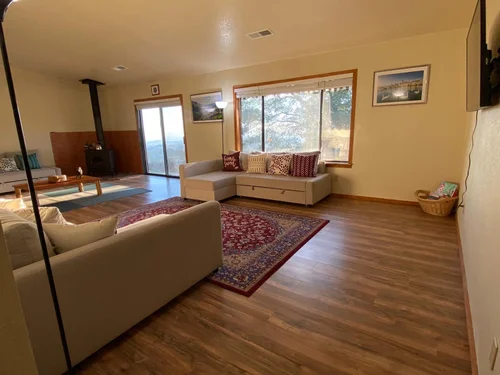
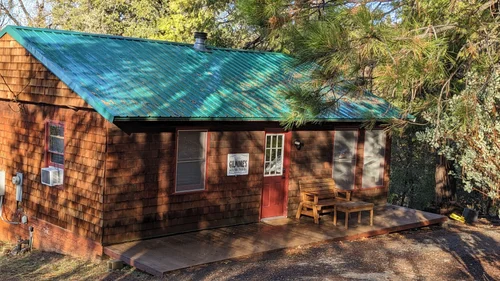
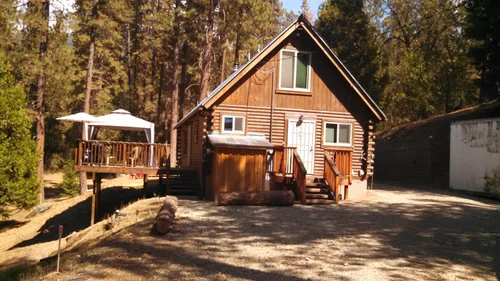
Essential Gear for Visiting Sequoia National Park
Below is a list of my essential gear recommendations for any trip to Sequoia National Park. For more details on these products and to explore even more of my favorite outdoor gear, check out my curated gear shop here.
Essential Gear
Camping Gear
Clothing
Safety & Miscellaneous
Hydration & Nutrition
Photography Gear
Altitude Sickness Prevention
Exploring Sequoia National Park’s Iconic Landmarks
Marvel at the Giant Sequoias
Kick off your adventure with the star attraction: the giant sequoia trees. The most famous one, the General Sherman Tree, is the largest living tree on Earth by volume. A short, well-maintained trail takes you right to this incredible giant, where you’ll also find signs explaining its fascinating history and biology.
Tip: For a quieter visit, go early in the morning or late in the afternoon.
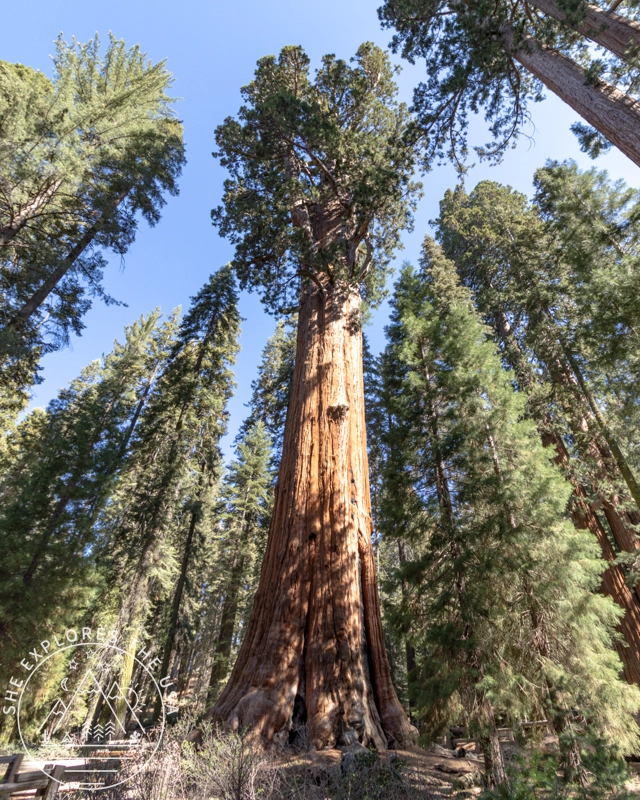
General Sherman Tree Trail Map
Click the map to view the full route on AllTrails.
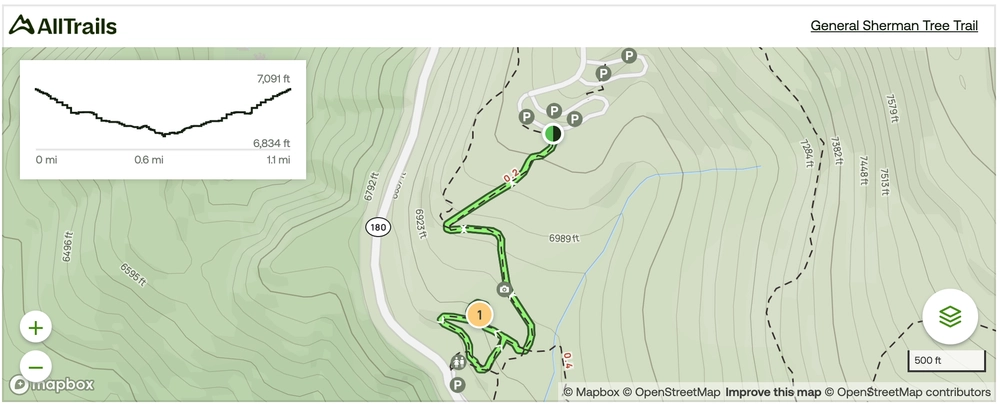
🥾 Plan Your Hike with AllTrails
AllTrails is my go-to for planning and prepping. I use AllTrails to scope out trail reviews, download maps to my phone, and build my own routes before transferring them to my Garmin 67i for on-trail navigation.
- Free (Base): Explore and save trails, navigate, and customize existing routes on desktop.
- Plus: Everything in Free, plus offline maps, wrong-turn alerts, weather & trail conditions, and 3D maps.
- Peak: Everything in Plus, plus AI-powered route tools and Outdoor Lens for plant & insect identification.
Wanna see how AllTrails can upgrade your adventures? Read my AllTrails App review here!
Giant Forest Museum
This museum is the perfect place to start your visit. Inside, you’ll find fascinating exhibits about the life cycle of giant sequoias, their unique ecosystem, and ongoing conservation efforts. After exploring the museum, you’ll be ready to hit the nearby trails with a deeper appreciation for these incredible trees.
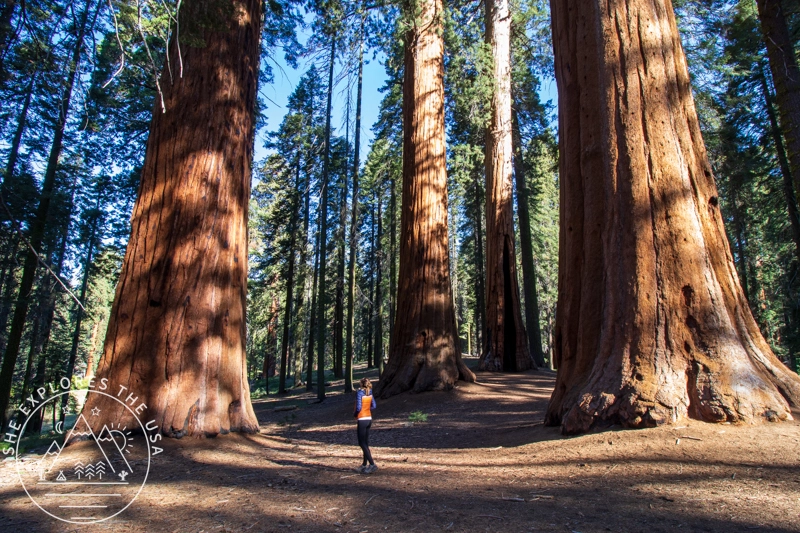
Big Trees Trail
This easy loop trail winds around Round Meadow, just steps from the Giant Forest Museum. Along the way, interpretive signs share stories about the Sequoia ecosystem, making it a perfect quick hike that’s both beautiful and informative. Plus, there’s plenty of parking nearby, so you can easily do this right after your museum visit without having to move your car.
Big Trees Trail Map
Click the map to view the full route on AllTrails.
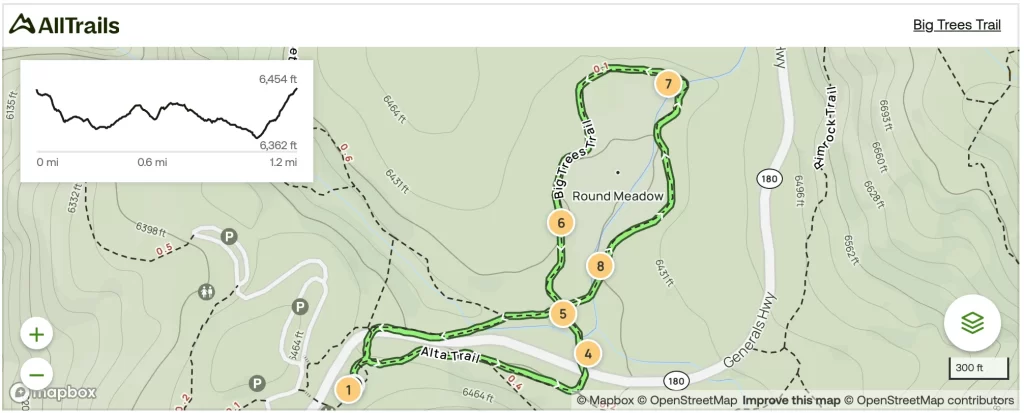
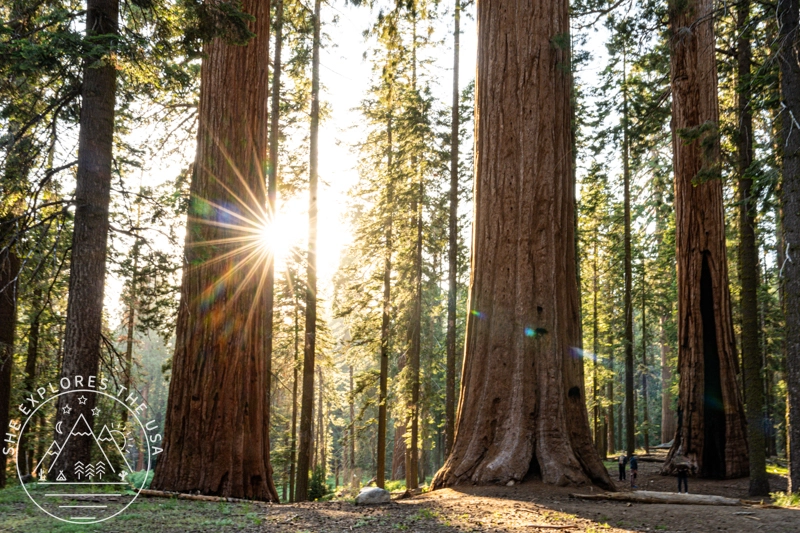
Take in the Views at Moro Rock
Hiking up Moro Rock is a must for those epic panoramic views of the Sierra Nevada and the valleys below. Sure, it’s a steep climb, but the steps make it doable, and trust me, the view from the top is totally worth it. Try to go early in the morning or around sunset to beat the crowds and enjoy cooler temperatures.
You can drive right up to the Moro Rock trailhead, or if you prefer, park at the Giant Forest Museum and walk over to the trailhead before starting your climb. Here’s the AllTrails link for the hike starting from Giant Forest.
Pro tip: Stick to the stairs and watch your step near the drop-offs. It’s a workout, but the payoff is seriously worth it!
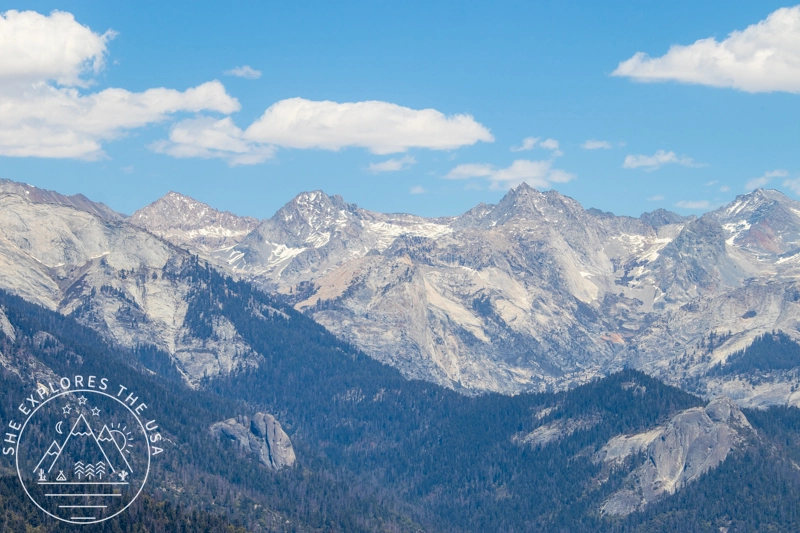
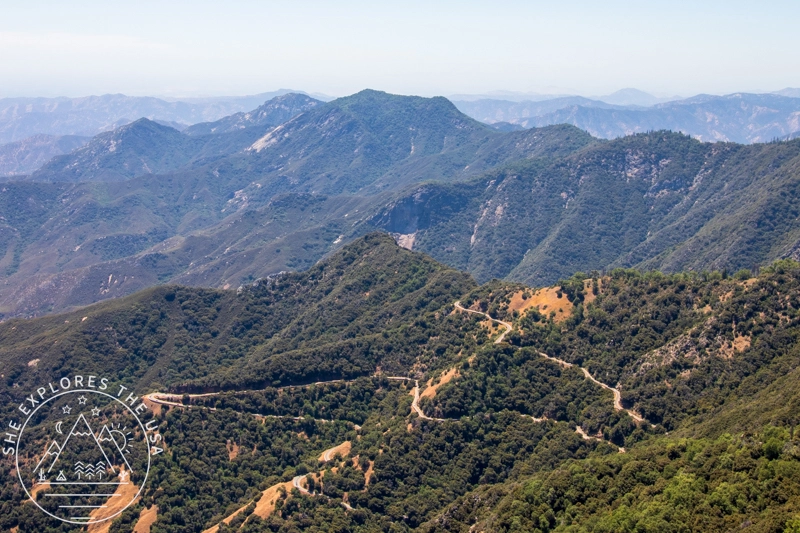
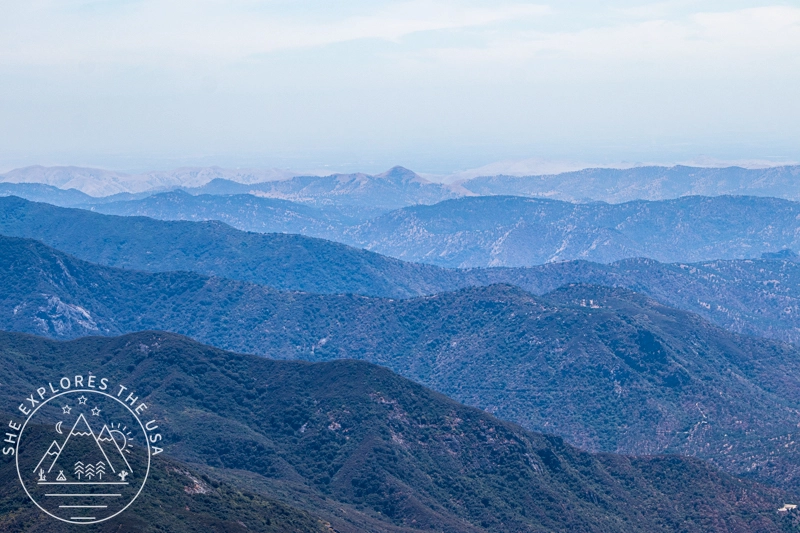
Moro Rock Trail Map
Click the map to view the full route on AllTrails.
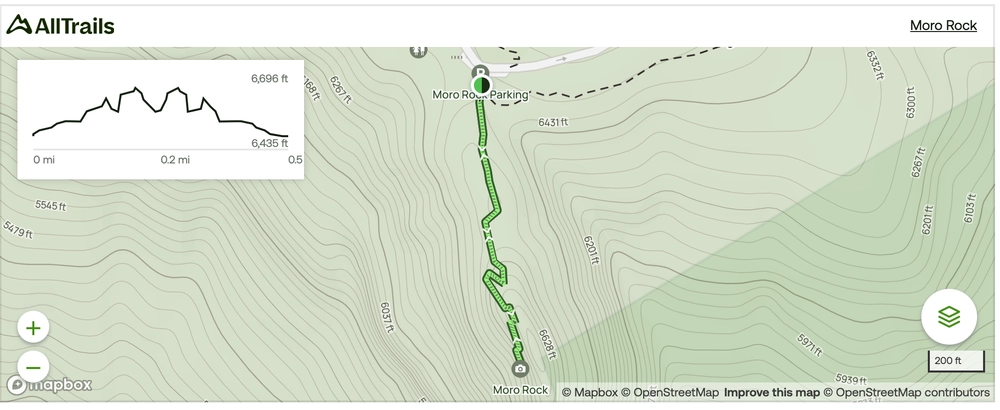
Crystal Cave (Now Reopened!)
After being closed for several years, Crystal Cave is finally reopening for the 2025 season, and it’s one of the most unique experiences in the park. This marble cave feels like something straight out of a fantasy film, filled with glittering stalactites, flowstones, and delicate helictites sculpted by water over thousands of years.
Guided tours will be available from May 23 to September 7, 2025, with daily departures between 9 AM and 3 PM. You’ll need to book your tickets in advance directly through the Sequoia Parks Conservancy website.
Good to know:
- You can’t buy tickets at the cave or in the park; online reservations only.
- The cave stays a chilly 50°F (10°C) year-round, so bring a jacket even on hot summer days.
- The tour involves a steep half-mile walk to the entrance and back up afterward, so be prepared for some uphill climbing.
If you’re looking to mix it up from big trees and alpine views, this underground world adds a magical (and cooler) change of pace to your Sequoia trip.
Adventurous Day Hikes in Sequoia National Park
Here are some of the most popular trails and some of my favorite scenic trails, too. I am including the AllTrails maps and links so that you can enjoy these beautiful hikes too during your next park visit.
Tokopah Falls Trail
This 4-mile round-trip hike to Tokopah Falls is a fantastic pick for first-timers who want a moderate trail with great views. You’ll follow the Kaweah River all the way to a stunning 1,200-foot waterfall that’s especially powerful in spring and early summer when the snowmelt is running strong. There are restrooms near the trailhead’s big parking lot, which is always a bonus. The trail is pretty easy and perfect for families.
Wildlife moment: On my very first time here, I spotted two bears just within the first 15 minutes of hiking! It’s one of those hikes where nature really surprises you, and you won’t be disappointed.
Tokopah Falls Trail Map
Click the map to view the full route on AllTrails.
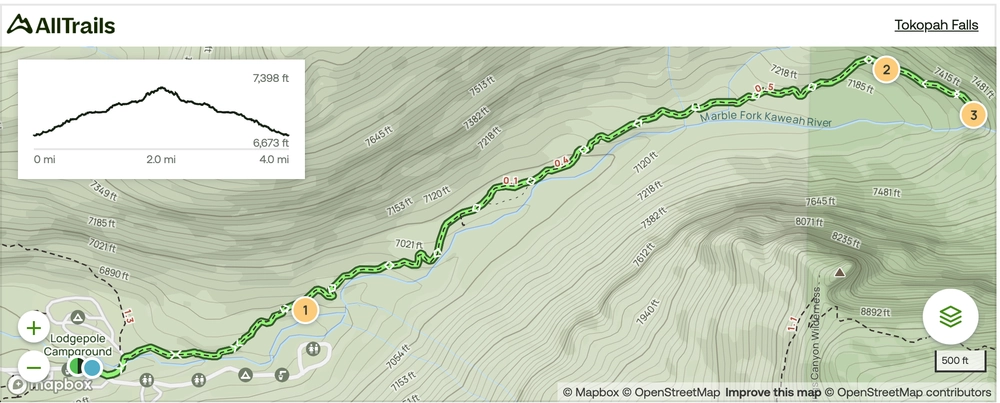
Little Baldy Trail
If you’re after a quieter hike with stunning payoff, the 3.4-mile round-trip Little Baldy Trail is your jam. It’s a moderate climb, but the views from the summit are totally worth it. When I did it, I had the whole summit to myself, one of those perfect solo moments that make a trip memorable.
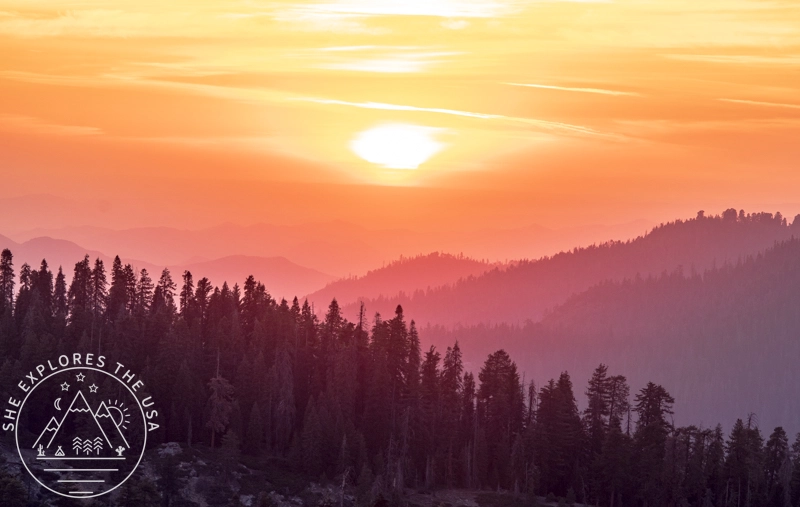
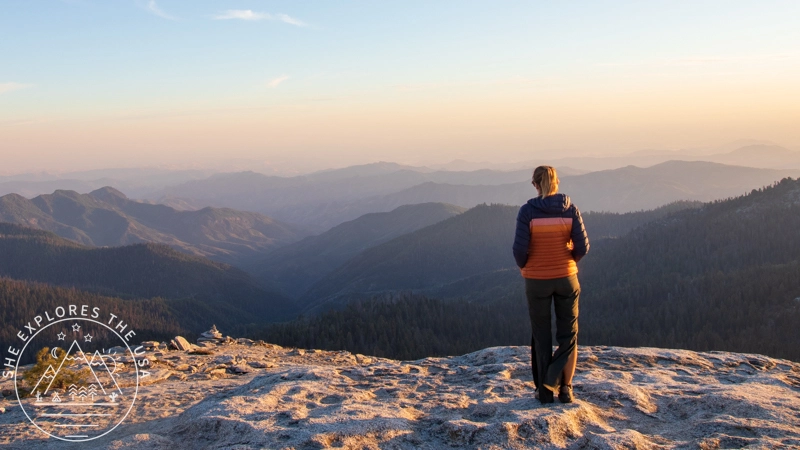
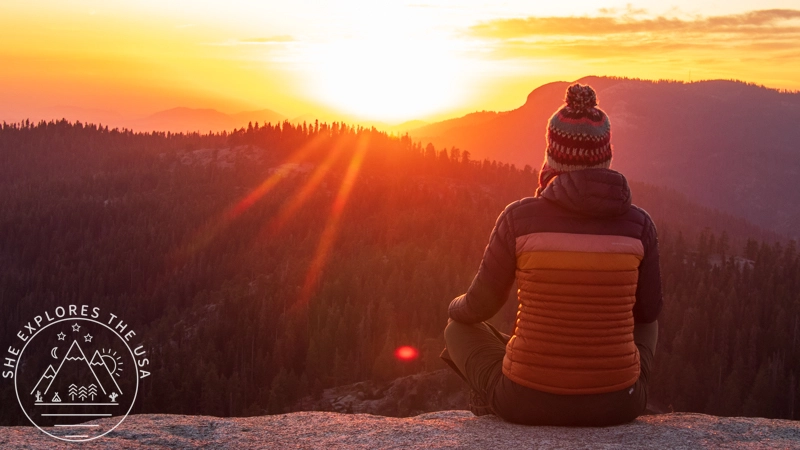
Little Baldy Trail Map
Click the map to view the full route on AllTrails.
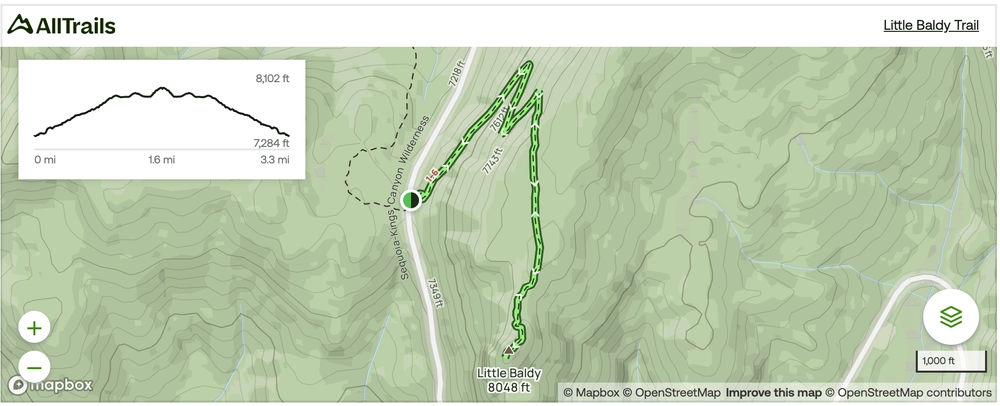
Crescent Meadow and Tharp’s Log
Known as the “Gem of the Sierra,” Crescent Meadow is a lush, peaceful spot framed by giant sequoias. The easy loop around the meadow leads you to Tharp’s Log, a cozy historic cabin built right inside a fallen sequoia. It’s a sweet mix of natural beauty and a little slice of history.
Crescent Meadow and Tharp’s Log Trail Map
Click the map to view the full route on AllTrails.

Eagle View via High Sierra Trail
This 1.5-mile trek from Crescent Meadow is a perfect little add-on if you’re exploring the Giant Forest area. You’ll wander through towering sequoias before arriving at Eagle View, a stunning overlook with wide-open views of the Sierra Nevada mountains and valleys beyond. It’s an easy hike with a big reward, especially if you’re craving a peaceful moment surrounded by Sequoia’s magic.
Eagle View via High Sierra Trail Map
Click the map to view the full route on AllTrails.
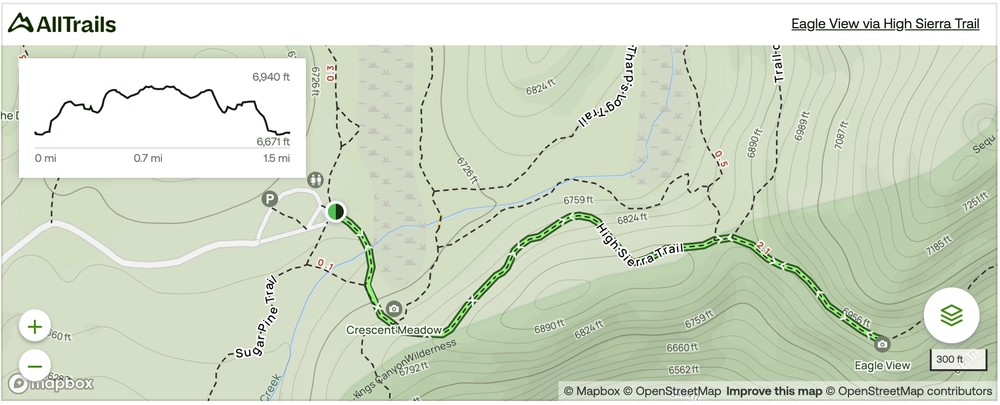
Lakes Trail
If you’ve got some extra time and a taste for adventure, the Lakes Trail is a must. It leads to several breathtaking alpine lakes, including Heather Lake. I hiked it one July and was surprised to find patches of snow still lingering, like a little magic sprinkled over the landscape. The trail can be tough in spots, but the views of those crystal-clear lakes framed by rugged peaks are more than worth the effort. If you want the full scoop and some tips, I’ve got a detailed blog post you can dive into.
Lakes Trail Map
Click the map to view the full route on AllTrails.
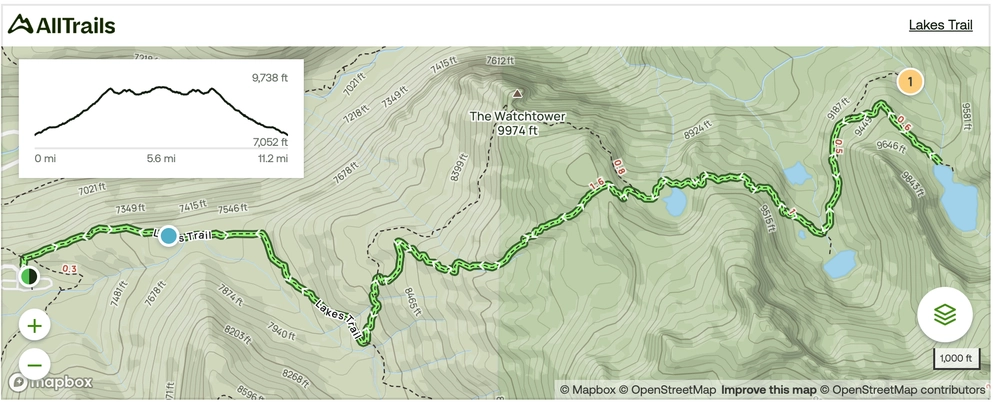
Sequoia’s Heather Lake Hike: The Best Snow Adventure
I visited Sequoia National Park for the second time in early July 2023, with the sole goal of hiking the…
Alta Peak
If you’re up for a real challenge with some serious rewards, the Alta Peak Trail is where it’s at. Starting from the Giant Forest Museum, you’ll walk through the iconic giant sequoias and peaceful meadows before the trail opens up to stunning alpine views. As you climb higher, the landscape shifts dramatically, rewarding you with panoramic sights that make every step worth it. The summit sits around 11,000 feet, definitely a day hike for the adventurous soul, though you can always turn it into a backpacking trip if you want to linger longer.
Keep in mind, winter can throw some curveballs with snow and icy trails, so gear up with microspikes or snowshoes if you’re visiting then. Whether you’re chasing forest magic or alpine thrills, Alta Peak gives you the full Sequoia experience.
Alta Peak Trail Map
Click the map to view the full route on AllTrails.
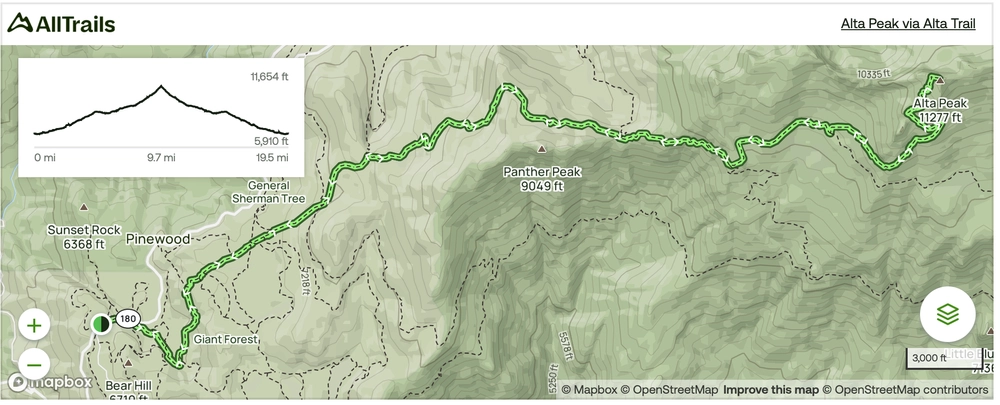
Scenic Drives and Sightseeing
Drive the Generals Highway
This beautiful road links Sequoia and Kings Canyon, winding through towering forests and stunning landscapes. Along the way, you’ll find plenty of overlooks and trailheads perfect for stretching your legs and soaking in the views.
Tip: Take it slow and savor the ride. Pull over safely at scenic spots, and keep in mind that snow chains might be required in winter.
Click the map to view the full route on AllTrails.
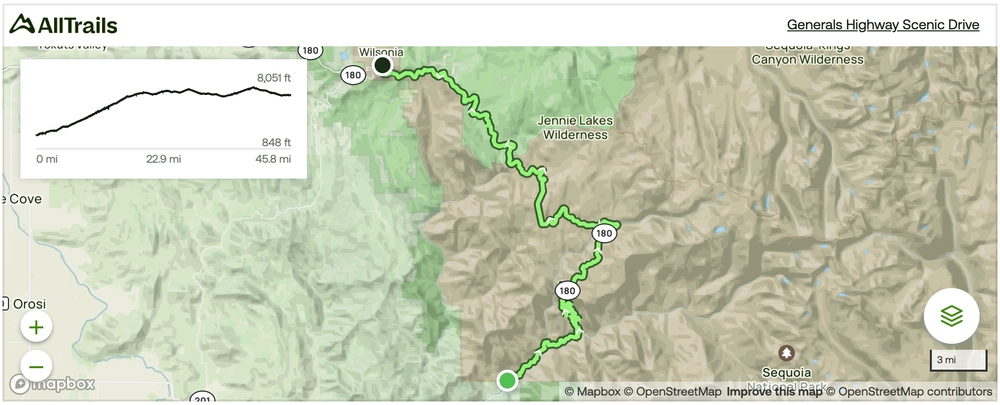
Kings Canyon Scenic Byway
Though technically in Kings Canyon National Park, this drive is a must if you have extra time. The canyon views are breathtaking, making it well worth the detour to explore nearby attractions.
Click the map to view the full route on AllTrails.
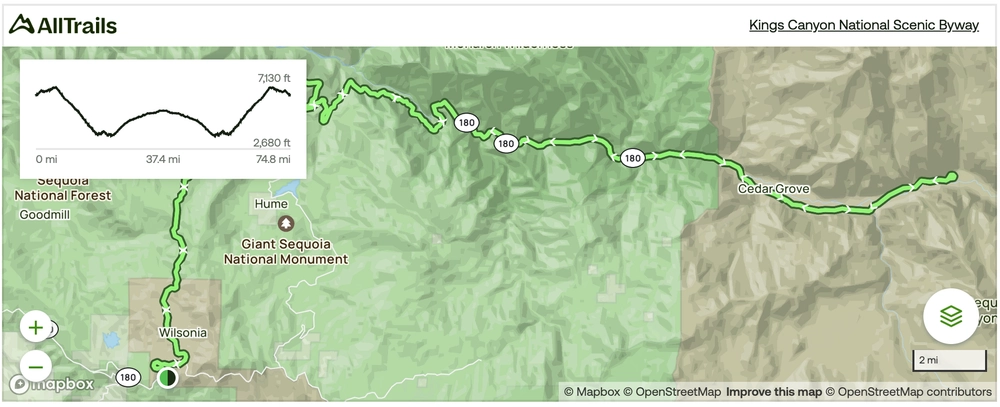
Wildlife Watching in Sequoia National Park
Sequoia National Park is alive with an incredible variety of wildlife, and spotting these creatures in their natural habitat is one of the best parts of any visit. Whether you’re hiking, relaxing in a meadow, or cruising along the Generals Highway, you’ll find plenty of chances to see and photograph the park’s wild residents.
Common Wildlife Sightings
- Mule Deer: Deer are everywhere here, especially in meadows and near popular spots like Big Trees Trail and Crescent Meadow. Lodgepole Campground is another great place to catch them, especially just before sunset. They move gracefully and often don’t mind you watching quietly, making for some magical photo moments.
- Black Bears: Black bears roam the forests and meadows, usually spotted from a safe distance by those with a keen eye. They tend to be most active in the early morning and evening, especially late summer through fall when they’re busy foraging. Always keep your distance and store food carefully to keep these majestic animals wild and safe.
- Marmots: These curious, furry residents love rocky trails and water edges. Tokopah Falls is a hotspot for marmots, often sunbathing on rocks or darting across the trail. They can be surprisingly friendly, sometimes letting you get close for photos, but never feed them!
- Squirrels and Chipmunks: Small and speedy, these playful creatures are everywhere, dashing along trails and scurrying around campsites. Their quick movements make them entertaining to watch (and a challenge to photograph).
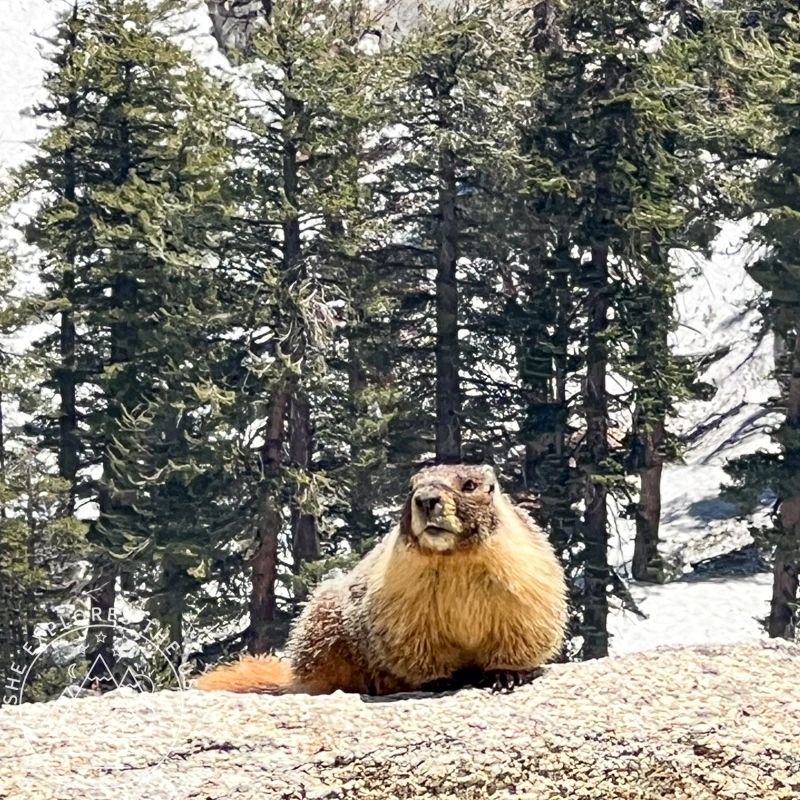
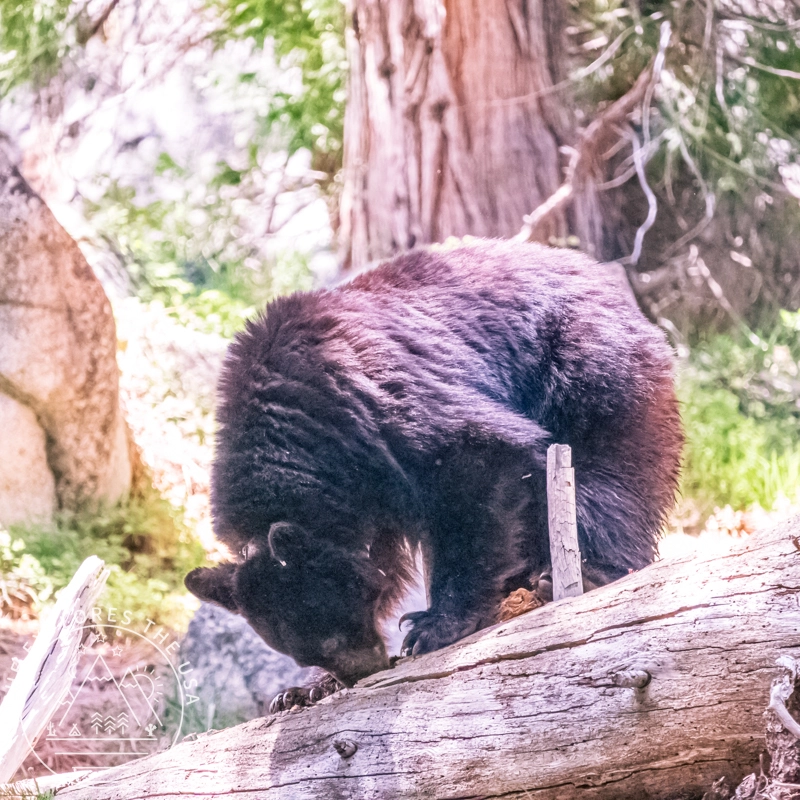
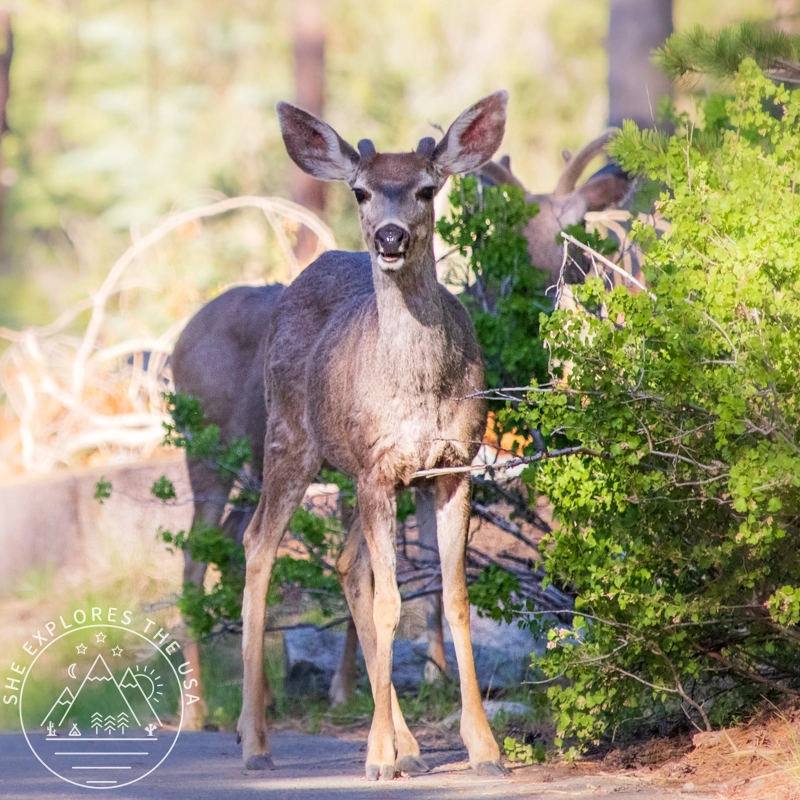
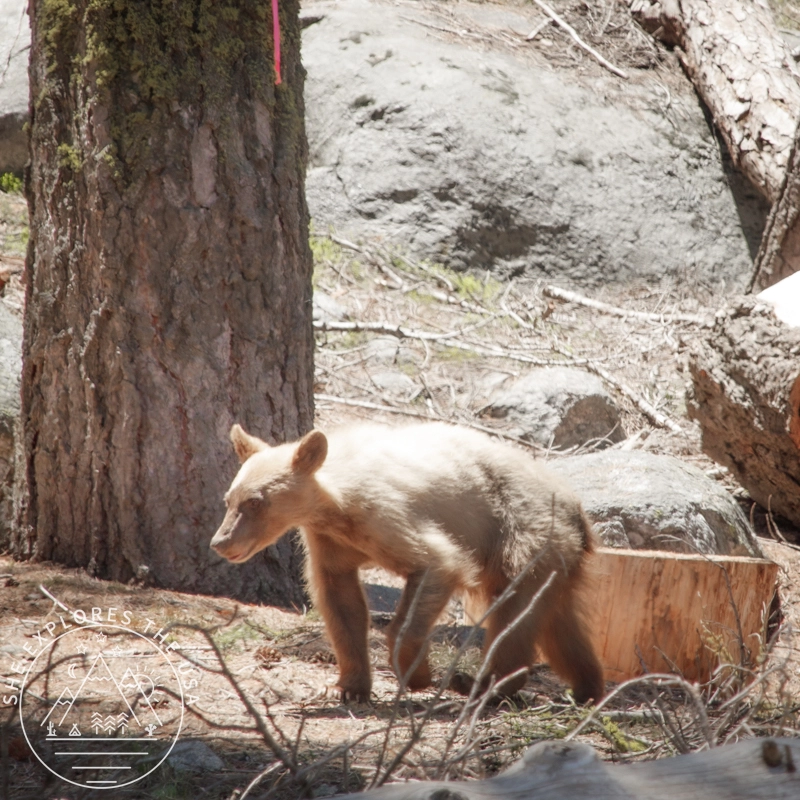
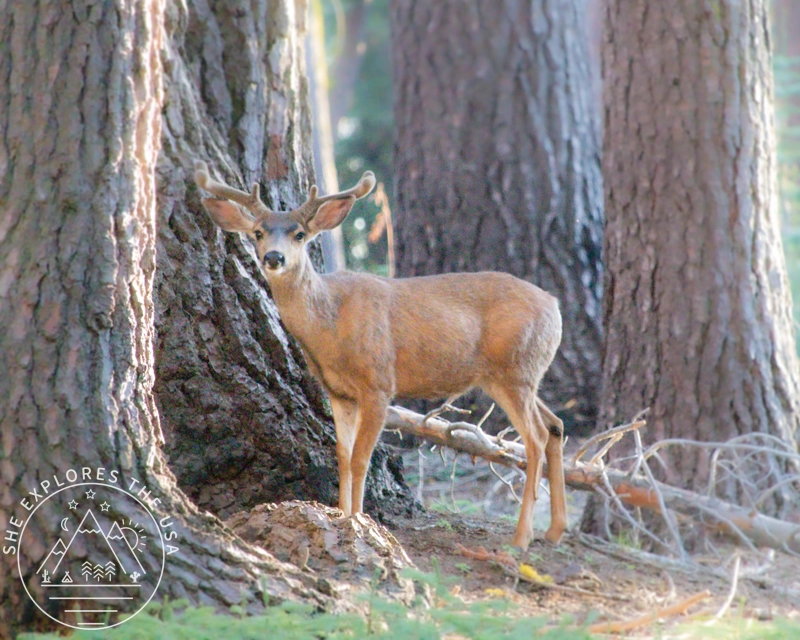

3-Day Sequoia & Kings Canyon National Park Itinerary (Enter via Three Rivers, Exit via Kings Canyon)
If you’re heading to Sequoia, this three-day itinerary is designed to help you enter through the Three Rivers entrance and exit via Kings Canyon National Park. It’s a smooth, geographically efficient loop that lets you soak in the park’s iconic sights, scenic drives, and hidden gems without doubling back.
Day 1: Giant Trees, Crystal Cave, and Scenic Vistas
- Morning: Start your adventure with a guided tour of Crystal Cave, a marble cave tucked into the hills just past the Ash Mountain entrance. It’s a cool (literally and figuratively) way to begin your day. Allow about 1.5 to 2 hours total for the drive, a short hike to the entrance, and the tour itself. Tickets must be booked in advance, with 2025 tours available from May 23 to September 7.
- Midday: After the cave, head deeper into the park by hiking up Moro Rock for sweeping Sierra Nevada views. Then make your way through Tunnel Log and take a peaceful stroll around Crescent Meadow, stopping by Tharp’s Log for a quick peek into Sequoia’s history.
- Afternoon: Continue your drive up to the General Sherman Tree, then stop by the Giant Forest Museum before looping around the Big Trees Trail.
Day 2: Hiking Adventures
- Morning: Start with a refreshing hike to Tokopah Falls, a 4-mile round-trip trail following the Kaweah River to a powerful waterfall, especially spectacular in spring and early summer.
- Afternoon / Sunset: Wind down with a sunset hike to Little Baldy, where you’ll likely have the summit (and the view) all to yourself.
- Alternate hiking adventure: Spend a full day tackling the Lakes Trail, an 11-mile round-trip hike that takes you to breathtaking alpine lakes like Heather Lake and Pear Lake. Pack plenty of water, snacks, and layers for changing mountain weather. This hike rewards you with stunning scenery that makes every step worthwhile.
Day 3: Waterfalls and Scenic Drives
- All Day: Take the scenic Generals Highway, stopping at overlooks to savor the forest views. If time allows, continue onto Kings Canyon Scenic Byway for jaw-dropping canyon vistas before you exit the park.
This itinerary balances adventure and relaxation while guiding you through Sequoia’s top highlights in a natural, enjoyable flow.
7 Leave No Trace Principles: How to Teach Kids
Mastering the seven Leave No Trace principles is essential for any outdoor enthusiast. Developed by the […]…
FAQ: Visiting Sequoia National Park
What is the best time to visit Sequoia National Park?
Summer is the best time to visit, with clear weather and full access to trails and sights. Spring is also great, thanks to stunning waterfalls from melting snow. Just be ready for chilly nights. For fewer crowds, early fall offers pleasant weather and a quieter park.
Is there a shuttle inside Sequoia National Park?
Yes! During peak season, from late May through early September, the park runs free shuttles to popular spots like the Giant Forest, Lodgepole, and Moro Rock. No reservations needed. It’s a handy way to get around without parking hassles.
Are there safety tips I should know before visiting?
Absolutely. Bring plenty of water, layers for changing weather, and sun protection. The weather can shift fast in the mountains. Also, practice Leave No Trace by packing out all your trash to keep the park beautiful.
Can I visit both Sequoia and Kings Canyon National Parks on one trip?
Yes, the two parks are next to each other and managed together, making it easy to see both. Just remember, there are no public shuttles between them. You’ll need a car to travel from one park to the other.
What is the best time to visit Sequoia National Park for hiking?
Late spring through early fall (June to October) is prime hiking season. By mid to late June, most trails are snow-free. Higher elevation hikes like Alta Peak and the Lakes Trail open up. July and August bring stable weather. September and early October offer cooler temps and fewer crowds. Just watch out for lingering snow in early spring and late fall.
What is the best time to see waterfalls in Sequoia National Park?
For the most impressive waterfalls, visit between late April and early June. That’s when snowmelt feeds falls like Tokopah, making them powerful and spectacular. By midsummer, many waterfalls slow down or dry up, so spring is your best bet for dramatic cascades.
Are pets allowed in Sequoia National Park?
Pets are allowed only in parking lots, paved roads, campgrounds, and picnic areas, never on trails. Keep them leashed (6 feet max), pick up after them, and never leave them unattended. For your pet’s safety and to protect wildlife, it’s often best to leave them at home.
What should I pack for a visit to Sequoia?
Check out my gear recommendations in the post for a full list of essentials.
Do I need a reservation to enter Sequoia National Park?
Nope! You do not need a reservation to enter the park.
Is Sequoia National Park accessible for people with limited mobility?
Yes. Many areas, including parking lots, restrooms, and some trails, are accessible. You can also borrow free wheelchairs at visitor centers and use the wheelchair-accessible shuttle in summer. Lodges and campgrounds offer ADA-compliant options. Ask for a temporary accessible parking placard if needed.
Is there cell service or WiFi in the park?
Cell service is spotty to non-existent in most of the park. You may find limited WiFi near the Lodgepole store or visitor centers, but it’s not reliable. Plan to be offline while you’re in the park.
Final Thoughts on Visiting Sequoia National Park
Sequoia National Park is loaded with incredible views and adventures. As a first-time visitor, I recommend you focus on the highlights but leave room for spontaneous moments (like stumbling upon wildlife) that make a trip unforgettable. By following my 3-day itinerary, you’ll also get a chance to explore the Kings Canyon National Park nearby, adding even more breathtaking landscapes and experiences to your vacation.
Above all, remember to practice Leave No Trace and honor the park’s natural beauty, so future generations can enjoy this magical place just as much as we do.
Ready to explore Sequoia and Kings Canyon? Start planning your trip today and make memories that will stay with you forever.
Post originally published on November 2, 2024, and last updated on December 7, 2025.
